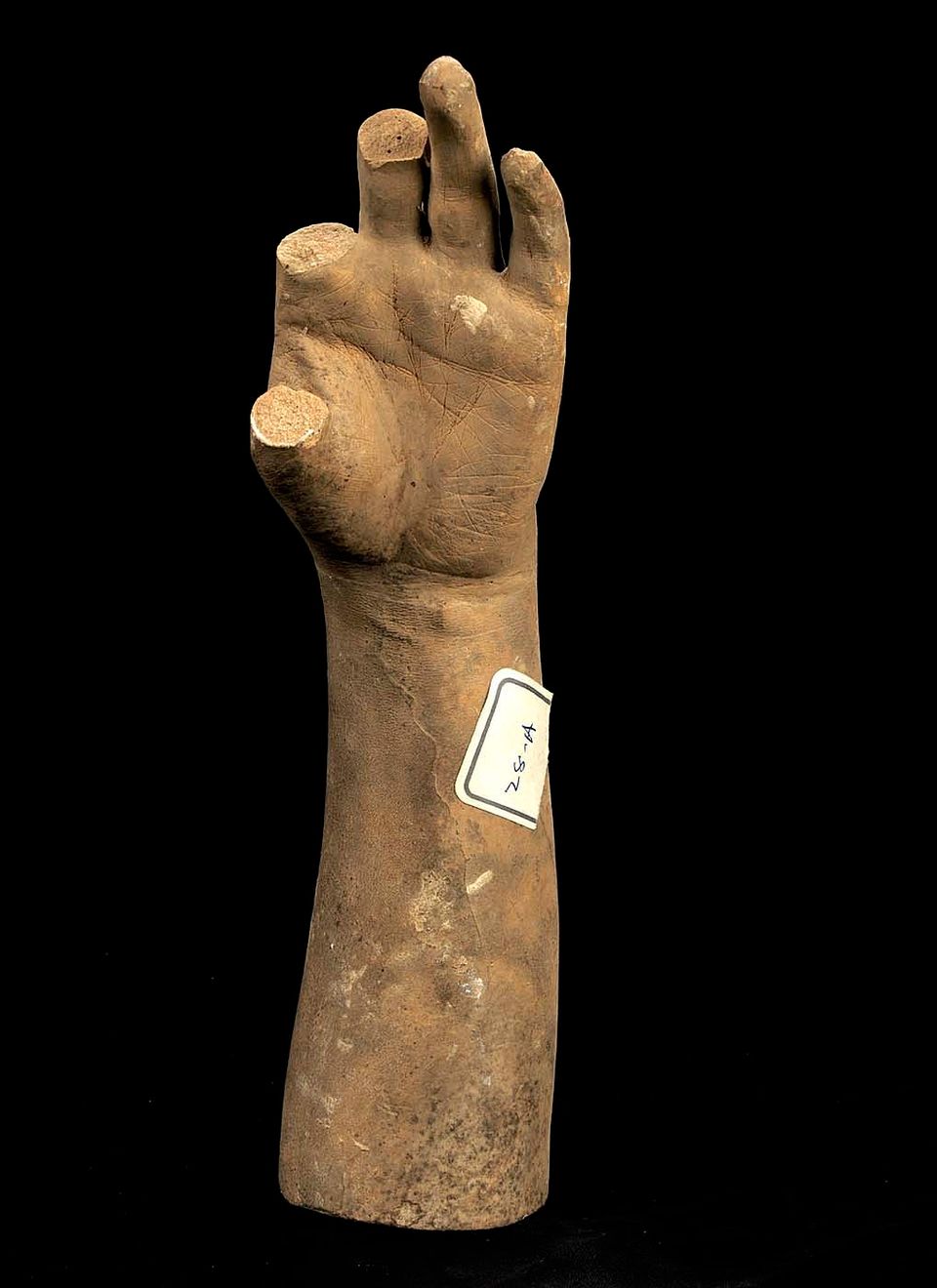
Karen Lemmey, SAAM's sculpture curator, has organized an installation entitled Measured Perfection: Hiram Powers' Greek Slave. Powers' Greek Slave was one of the most popular sculptures of the 19th century. As part of her preparation, Karen worked with Smithsonian X 3D, part of the Institution's Digitization program, to create a 3D model of the this sculpture. Karen continues to explain the process. You may also read her first post on creating a 3D model of the sculpture, as well as a piece about conserving the Greek Slave.
Sculptors have long made body casts of limbs and torsos to serve as anatomical study models. Many sculptors were also hired to make death mask impressions of the faces of deceased loved ones and public luminaries. But in the nineteenth century, the boundary between modeling in clay and body casting was strictly observed, and sculptors risked their reputations and credibility if they were suspected of "cheating" by substituting a body cast instead of modeling the figure themselves. Remarkably, despite this risk, several objects in the exhibition Measured Perfection: Hiram Powers' Greek Slave demonstrate how the sculptor may have incorporated body casts into his finished works.
Perhaps most scandalous is a plaster body cast of a woman's forearm and hand that eerily captures the unmistakable skin texture and muscle tone of a living model. Until now, this object had been catalogued as Cast of the Forearm and Left Hand of "Greek Slave" (thumb and two fingers missing), a misleading title suggesting this cast was made from the sculpture of the Greek Slave, rather than from a living person. Research for this exhibition gives us the opportunity to more accurately present this object. This fragmentary plaster cast is the exact size and holds the same pose as the left arm and hand of the Greek Slave, inviting us to wonder who may have served as the artist's model for this famed sculpture and to what extent Powers relied on studies from life to create his idealized figures. In an attempt to quantify the differences between the Greek Slave and this body cast, SAAM teamed up with Smithsonian X 3D, the Smithsonian Digitization Program, to conduct deviation analysis on digital scans of both objects. The results are still under investigation but come see the exhibition and compare the two objects for yourself!
Powers also relied on body casting in other instances. Early in 1839, he cast the hands and forearms of his sleeping six-month-old daughter, Louisa. He then made molds from which he generated additional casts, one of which he trimmed with a strip of real fabric to suggest the cuff of the baby's sleeve, and displayed on a pillow: Louisa Powers' Hand. In time, Powers mounted a cast of the baby's left hand in the center of a sunflower bloom, creating Loulie's Hand (Luly's Hand). Although the artist made this work as a family keepsake, Loulie's Hand attracted such admiration that Powers authorized many replicas in marble and plaster. In 1851, he revisited the sunflower motif and created a similar work using a cast of the right hand of an older child. In both Loulie's Hand and Child's Hand, Powers took a shortcut in production: rather than sculpting the hands in clay, he used these body casts as pointing models, adding pins and pencil marks to guide their direct translation into marble. These incredibly lifelike casts capture the folds of the flesh, fingernails, and skin texture in detail that can never be fully replicated in marble.
Since the nineteenth century, life casting has become an accepted studio practice that is widely used by many contemporary artists, suggesting that Powers was a sculptor ahead of his time.
Measured Perfection: Hiram Powers' Greek Slave is organized by the Smithsonian American Art Museum in collaboration with the United States Patent and Trademark Office.


















